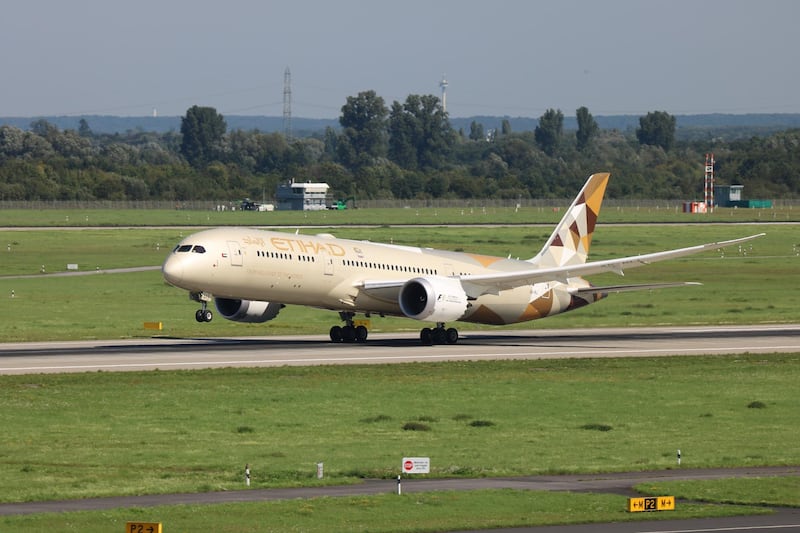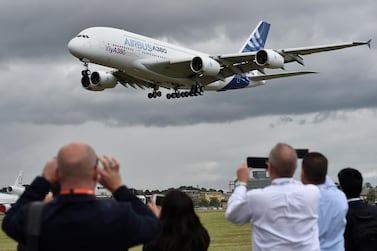With Airbus's announcement that it will stop making the A380 superjumbo by 2021, the world’s airlines will now be looking for an alternative.
For Emirates, the largest operator of the double-decker jets, Airbus will continue to supply its planes – the Dubai airline has placed orders for 40 A330-900neos and 30 A350-900s.
Other airlines may look to Boeing, where the Dreamliner 787 is already a viable alternative.
From an airline perspective, the biggest difference between these two aircraft is price. An Airbus A380 costs $432.6 million (Dh1.58 billion) but a Boeing Dreamliner comes in at around $265m.
But from a passenger’s point of view – aircraft cost, engine performance and fuel consumption matters little. What does matter is leg room, turbulence and how quickly you can get to where you’re going...
The Airbus vs the Dreamliner – a passenger's perspective
Boarding Time
The time it takes to board a plane depends on the airline running operations and the airport you’re departing from.
But – purely from a numbers point of view – it will take longer to get 500 passengers and their bags on to an A380, than it will to get 300 passengers on to a Dreamliner.
Up in the air: turbulence
Nobody likes turbulence. When flying into unstable air, the A380 with its bigger body and massive 79.8-metre wingspan will certainly connect with a lot more of it than the Dreamliner. However, as weight dampens the effects of turbulence, what passengers will actually feel on the 560-tonne A380 will always be less than what they might experience on a 247-tonne Dreamliner.
Looking out: the windows and views
If you’re a window-seat aficionado, then the Dreamliner will get your vote. Not only are the 48-centimetre windows bigger than those of any other aircraft on the market, they also come with electronic dimmers in every cabin class. The crew can also control the shades remotely so they don't need to wake passengers to close window blinds.
Leg room: size matters
The main factor in determining leg room is seat pitch – the space between a point on one seat and the same point on the seat in front of it. This comes down to more than the aircraft you're flying in because it is the airline that finalises configurations.
This means a Dreamliner operated by two different airlines could have different leg rooms.
At present, Etihad’s Dreamliners perform better than the Abu Dhabi airline's A380 options, with a pitch of 32 inches compared to the superjumbo's 31 inches. However, the A380's seats are a little wider, coming in at 17.5 inches compared to 17.2 inches on the Dreamliner.
Emirates's A380's were known for their good seat pitch, with an impressive 34 inches in economy class, but it remains to be seen what the leg room will be on the A330-900s.
Bathroom breaks
In terms of waiting on the bathroom, there’s not a whole lot of difference between the two. According to SeatGuru, on an Etihad Dreamliner 787-9, there are eight bathrooms for 231 passengers, meaning about 28 people share one lavatory. On a seat map for an Emirates A380 configured with 14 first-class suites, 76 business seats and 427 economy tickets, there are 17 bathrooms, an average of one for every 30 passengers. So, the Dreamliner has a slight advantage, but depending on seating configuration, this can change per airline.
What’s the air like?
Take note of how much your empty plastic bottle deflates on your next trip – it’s a good indication of what the cabin pressure was on your flight. One of the major selling points of the Dreamliner is its regulated cabin air. The pressure and the humidity are both set higher, mimicking altitudes of 6,000 feet rather than the standard 8,000 feet. This helps cut down on fatigue, dry eyes and other jet lag symptoms. Compare this to cabin pressure in the A380 which averages around 7,000 feet, still lower than other aircraft but not as impressive as the Dreamliner.
Luxury perks
This round goes hands-down to the A380, the most customisable plane in history. Dreamliners, on the other hand, are built in a way that limits the extent to which airliners can customise the planes, mainly for resale purposes. There’s also a lack of extra space, so things like Emirates's on board bars and spas or three-room apartments like Etihad’s The Residence may be a thing of the past.
How fast can it go?
Surprisingly, despite being bigger, the Airbus A380 can reach speeds of more than 1,000 kilometres per hour compared to the Boeing 787 which tops out at 954kph. Although both are very fast, passengers flying on the Airbus A380 could get to their destination quicker than those flying on the Boeing.







